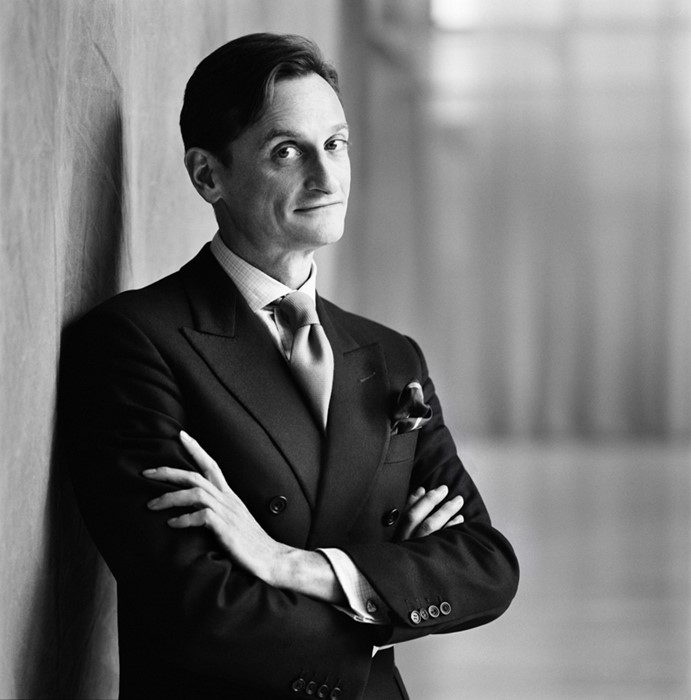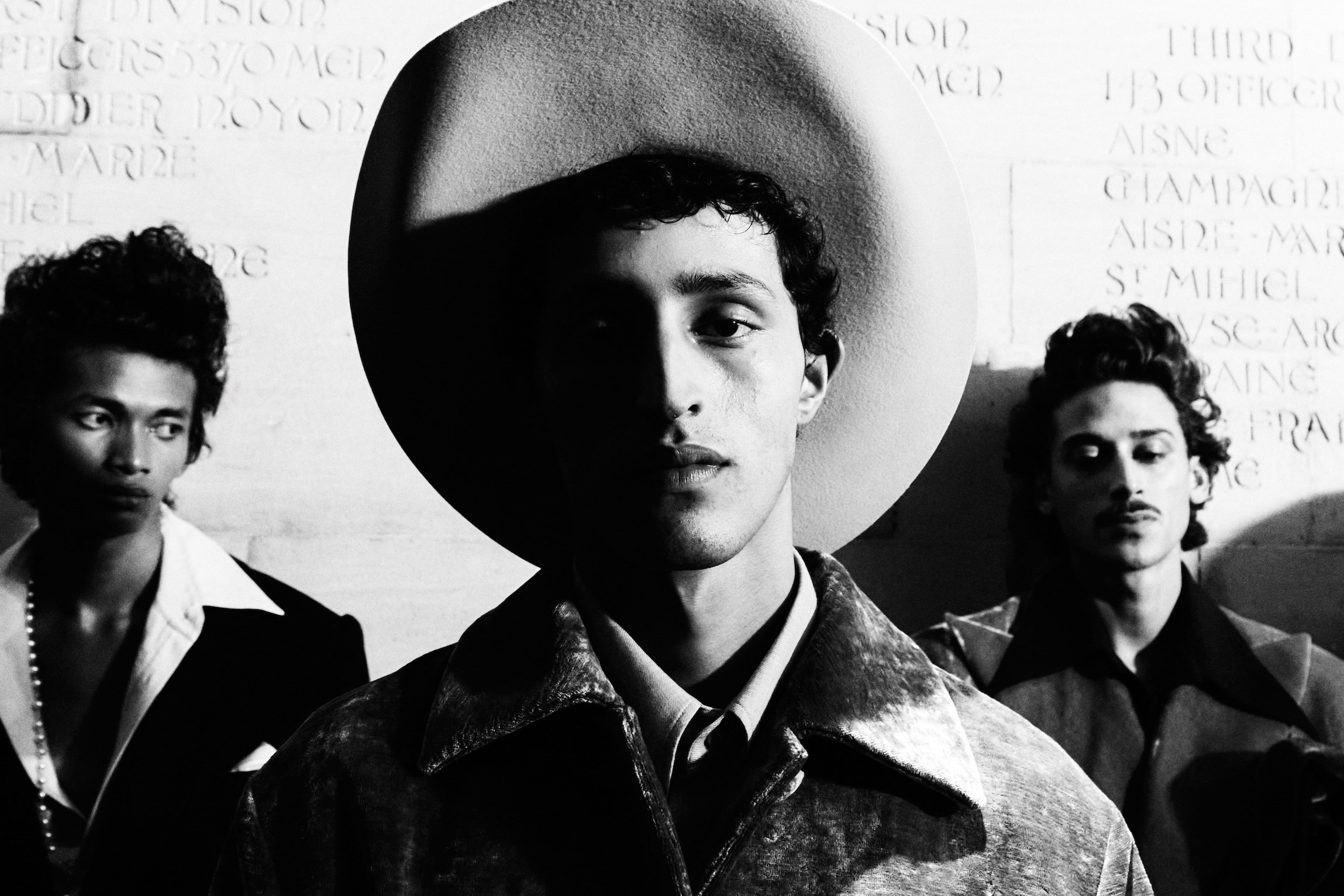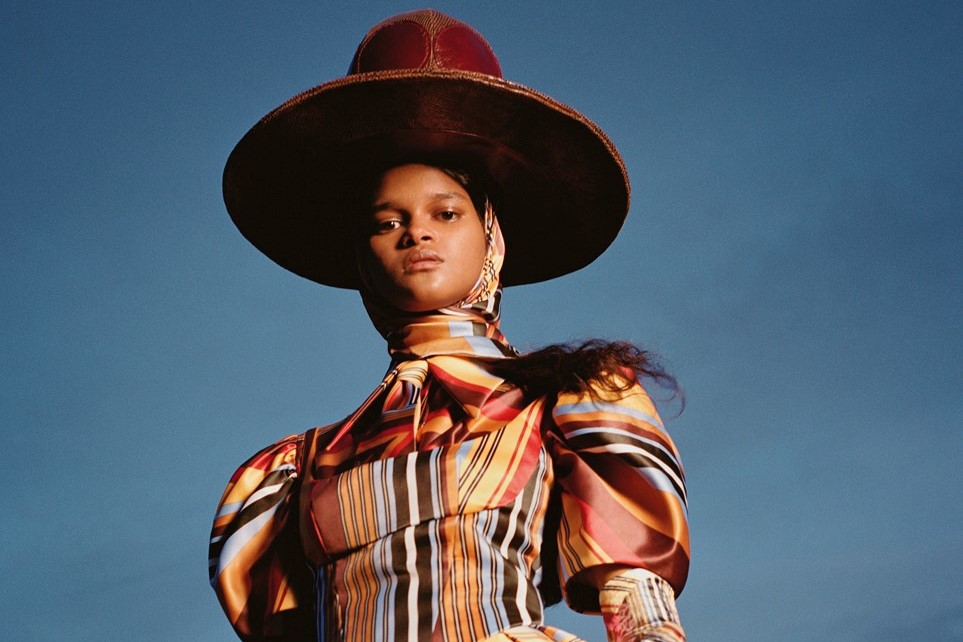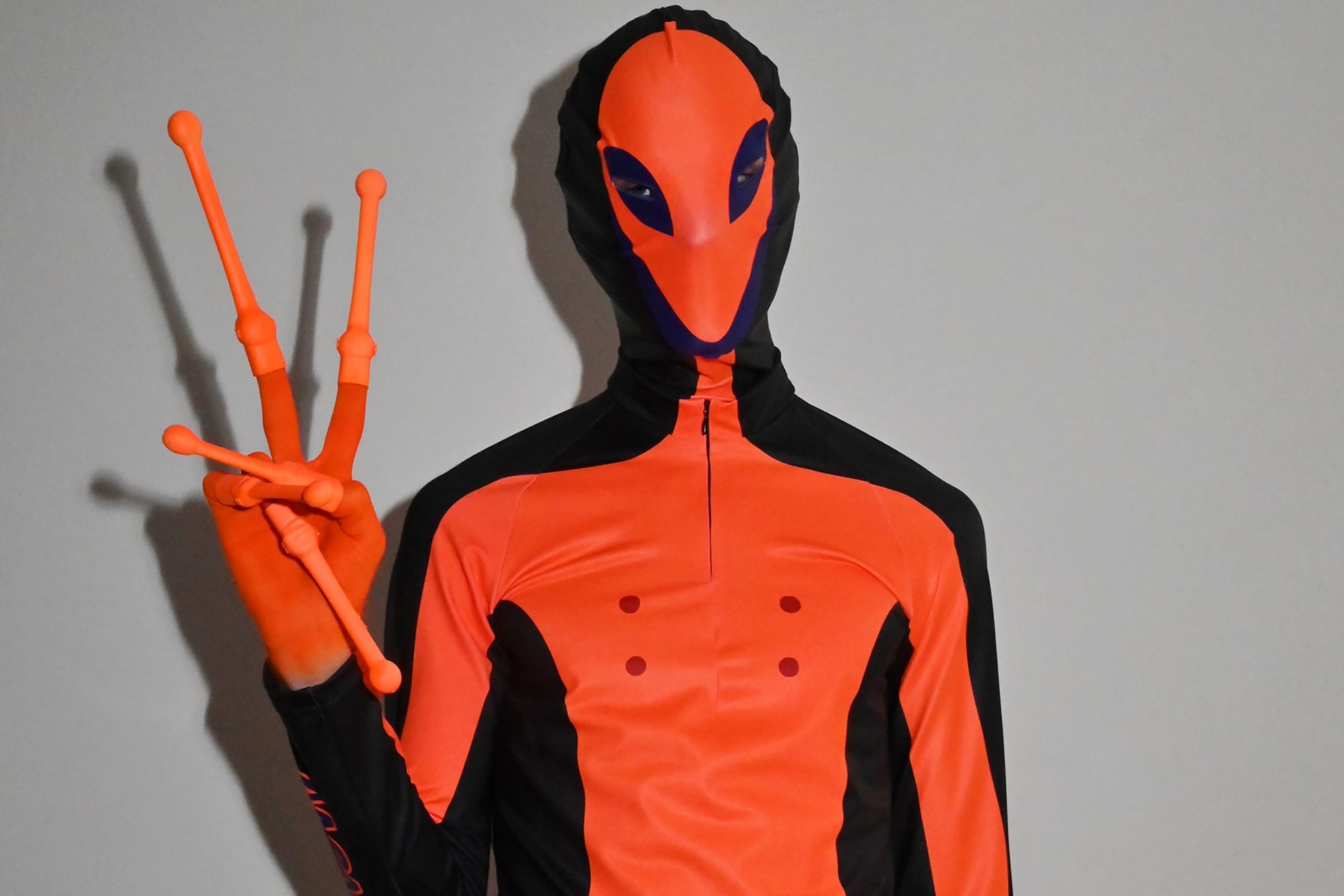Hamish Bowles serves as international editor at large for American Vogue. A graduate of Central Saint Martins, he started his career as style editor of the magazine in 1992, before being promoted to european editor at large, and, most recently, to
Hamish Bowles serves as international editor at large for American Vogue. A graduate of Central Saint Martins, he started his career as style editor of the magazine in 1992, before being promoted to european editor at large, and, most recently, to his current position. An acclaimed fashion academic, he is renowned for his encyclopedic knowledge of costume history. He has authored numerous books, such as, Yves Saint Laurent Style in 2008. His wide range of activities includes curating, in particular for the exhibition Jacqueline Kennedy: The White House Years, at the Metropolitan Museum of Art in New York, in 2001, and Balenciaga: Spanish Master, at the Queen Sofia Spanish Institute and then the de Young Museum in San Francisco.
How would you connect fashion to elegance?
They are two essentially different things: the word fashion, by its very nature, carries with it an idea of transience, constant renewal, something that is modish and timely, of the moment, dernier cri. Elegance suggests something that is in many ways the contrary to that idea: it is enduring and timeless, and relates to an attitude that certainly isn’t dependent on garments. The word itself is old-fashioned in a way. I certainly think there are people who dress fashionably that have an innate sense of elegance. But connecting the two words in terms and thoughts can be a little complicated.
What is the role of history and art history in your conception of fashion?
Well, it’s primal to my conception of fashion, on so many levels. My personal interest in fashion grew out of an interest in costume history, when I was very young. During my teens, I had been very interested in the history of costumes as a mirror of changing times and as a way of absolutely pinpointing a moment. When I was reading a novel from a certain period, for instance, imagining exactly what the character would have been wearing was a very potent and enriching part of the experience. When I turned into my teens and I started looking at fashion magazines, and especially British Vogue, it corresponded to a very historicist moment in British fashion. You had designers like Ossie Clark, who was often looking to the 30s and 40s, Antony Price, who was very specifically looking at the 40s and 50s, in a kind of comic strip way, Bill Gibb, who was a medievalist, Zandra Rhodes who was doing all these very romantic crinoline dresses at that point… A lot of what was going on in fashion and in fashion image-making was extremely referential. Grace Coddington would be working with photographers like Bailey and Barry Lategan and producing photo essays that were very much based on a Lartigue story for example. So the whole concept of fashion when I was first aware of it was referential to the past. That continued when I went to Saint Martins: our research projects were very often based on fashion and costume history. When I started at Saint Martins, John Galliano was just graduating. His work was incredibly referential and he was looking specifically at that point – for his final degree collection – at the Incroyables the counter-culture dandies who emerged at the time of the French Revolution. What’s exciting for me now is for designers to take period references and do something completely new and surprising with it, for instance Miuccia’s flame-heel shoe, which is not something that would have been conceived in the 50s...
Would you describe fashion as a language and a discourse, as Barthes did it?
In today’s world, it is certainly a lingua franca, a common shared language, because it is so completely global. It requires less interpretation than contemporary art, that is often more related to specific cultural contexts. It’s less troubling to process, for a lot of people. It’s certainly a narrative about our time. It has a lot to say about the society that produces it.
The word "intellectual" was coined in a time of great political distress. Does fashion have a political role? And in which way?
Fashion becomes a political expression if it’s a reaction, like punk, which was of course as much a mindset or an attitude. It was a political reaction to what was happening in Britain in the 70s. Obviously, fashion has reflected women’s increasing liberation or the reverse in some parts of the world today. Clothing can be a political tool, whether imprisoning, liberating or empowering. But fashion in the context of high fashion, seasons, runway, has less to do with politics.
"The exciting thing about fashion is that it’s all about change and reinvention, but it is about reinventing something that exists"
How would you relate the concept of fashion to the one of style?
Someone that is dressed in a way that is extremely unfashionable can have immense and enduring style. It is an attitude, a point of view, a more intuitive thing. It’s not necessarily something you can go to a store and acquire. I know very stylish people who rarely or never buy items of fashionable clothing. Some of the most stylish people I’ve ever seen might not even comprehend the notion of “fashion” – like farm workers in the Indian countryside for instance. There I have seen unbelievably stylish people, with incredible grace, carriage, completely artless and very inspiring. It’s not a self-conscious thing, it’s very intuitive.
What does fashion have to do with intellectuality?
I think it all relates to history. There are designers that are far more historicist than others. Even when you look at a designer that is extremely modernist-thinking, there are resonances from other periods: you look at Courrèges and there is something of a 20s androgyne Suzanne Lenglen tennis dress, even if in the context of the day it meant something totally different. For me it’s just an organic association. The exciting thing about fashion is that it’s all about change and reinvention, but it is about reinventing something that exists.
You curated the Jacqueline Kennedy show at the Metropolitan Museum of Art. What is the role of icons in fashion?
It’s an essential part of fashion and fashion history. In costume history terms, you look at the impact of monarchs’ personal style and sartorial instincts, whether it’s Philip II of Spain, Elizabeth Ist, Queen Victoria before and after the death of Albert. Icons totally change the fashionable paradigm, whether it’s Lilian Russell introducing a new idea of the silhouette, or Irene Castle vanishing that Lilian Russell look at one fell swoop ; and now, whoever it is, Lady Gaga, Kim Kardashian, Michelle Obama, or the Duchess of Cambridge, people respond to the reassurance of someone who has a consistent style, even if that consistency is about being mercurial and chameleon-like. Mrs Kennedy was very aware of it. What I found so interesting while curating that exhibition is that she was dressed in this very iconic, armorial way for her official First Lady duties, and when she wasn’t on display playing that role, she was in shirts and slacks, dressed like any kind of prototypical early 60s woman off duty. She very much thought of her clothing as uniform and costume for a specific role. Her clothing was very telegenic and read very clearly in photographs.
You also work very intensely with interior design. What is the relation between interior design and fashion?
Living in New York, I’m very much in the center of a decorating culture that is driven in a fashion-centric way. Fashionable people, who are interested in a decorative environment, want it to be an expression of what is modish. There are moments when the diffusion of what is fashionable in clothing and interior decoration is much more closely intertwined. You can think of the Wiener Werkstätte, the Cubist era and 20s fashion design, Carlos de Beistegui’s 1930s interior paralleling a Neo Romantic fantasy in fashion. There are essential connections, the main difference being that decorating is in principle a much longer-term choice.
In two weeks Donatien will be interviewing the illustrator Jean-Philippe Delhomme.




